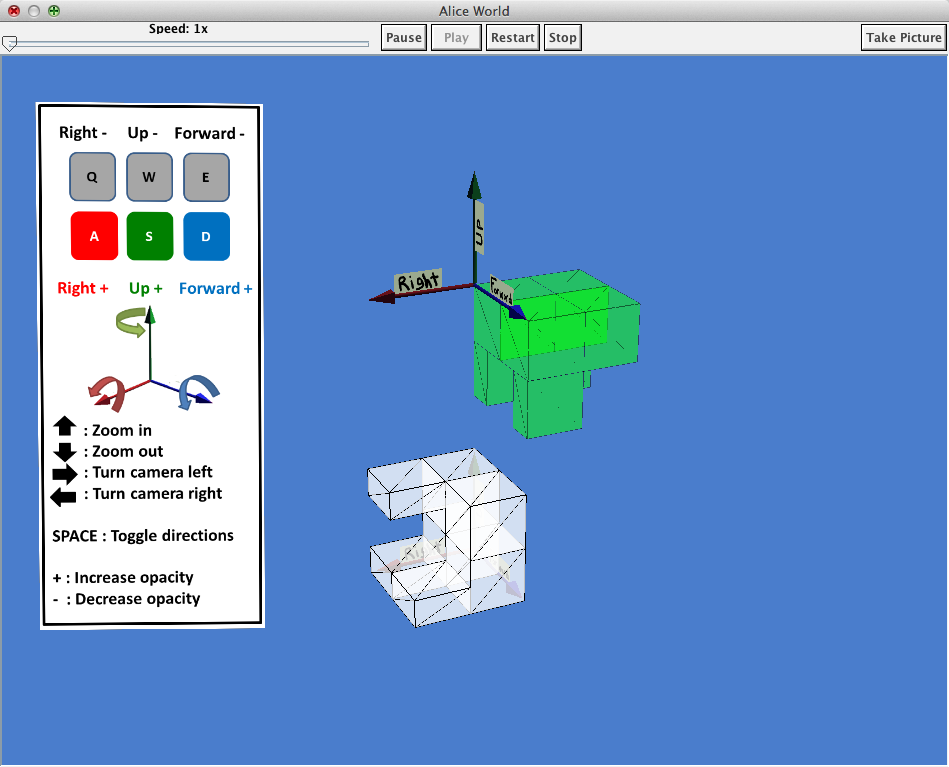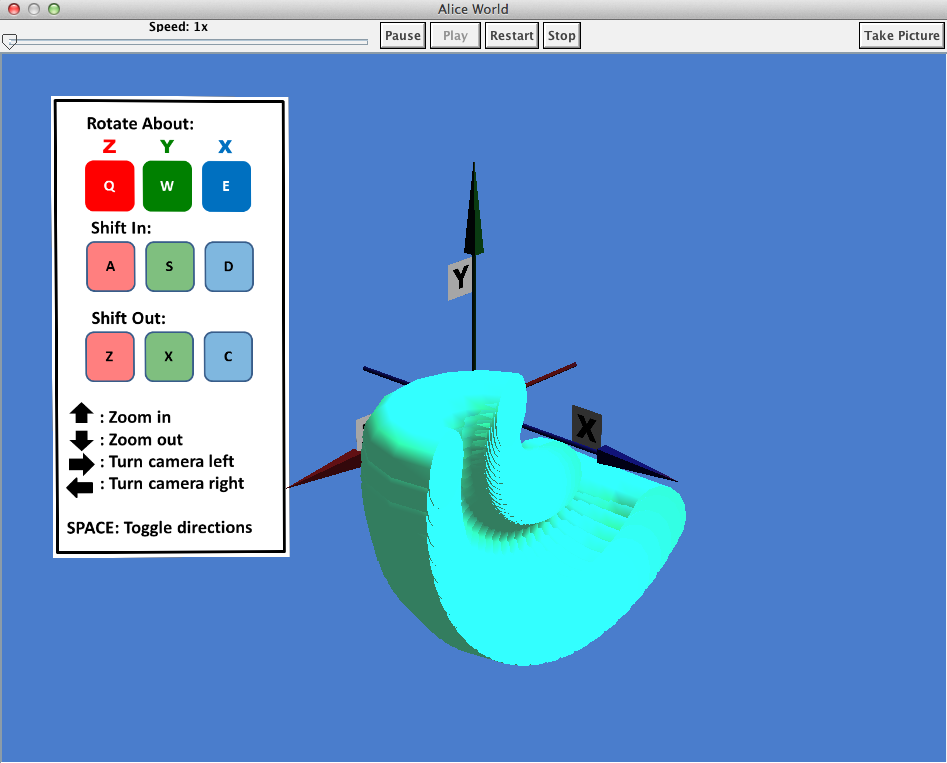Spatial Skills Training
Session 2 students underwent a spatial skills training curriculum, adapted from Sheryl Sorby’s work. The curriculum covered 8 days, 45 minutes per day. Participants completed worksheets including sketching and matching, built models using blocks, and completed Alice World simulations.
Topics included:
- Isometric Drawings
- Orthographic Drawings
- Single and Double Rotations of Objects
- Reflections and Symmetry of Objects
- Revolutions of Objects
- Alice Worlds
Other topics included in this workbook but excluded from our curriculum include combining solid objects, inclined and curved surfaces, paper folding, cutting planes, and cross sections. These topics were excluded due primarily to time limitations.
Isometric Drawings
These drawings depict a 3-D object on a 2-D sheet of paper. An isometric view is the view looking down a diagonal of a cube that is part of the object (workbook iso 02-03, 04-06).

Orthographic Drawings
These drawings depict "the faces of the object straight on or parallel to the viewing plane," including top, side, and front views.
Single and Double Rotations of Objects
This transformation includes turning an object about a straight line, or axis of rotation.
Reflections and Symmetry of Objects
The reflection transformation happens when an object is reflected across an entire plane. An object is symmetrical if a plane can cut the object into two halves that are mirror images of each other.
Revolutions of Objects
These shapes are "created by revolving a set of 2-D curves about a coordinate axis."
Alice Worlds
To aid students' visualization of revolutions and rotations, two difficult concepts, we created a set of Alice worlds for students to play around with. Alice is an educational software that teaches programming to beginners in a 3D environment. In the rotation world below, students can use the arrow keys to rotate a shape to get it into the correct configuration.

In the revolution world below, students can move a shape about an axis and see what the revolution looks like.

Resources
Workshop Materials
- The majority of our curriculum was adapted from Sheryl Sorby's workbook, available for purchase at: Sorby, S. A. 2011. Developing Spatial Thinking Workbook. Boston, MA: Cengage Learning
- Each morning, the spatial training began with a brief explanation of the day's tasks, using Sorby's powerpoint slides available here: www.engageengineering.org/?107
- Alice can be downloaded here: www.alice.org/index.php
- The Alice worlds used in the workshop can be downloaded directly here: